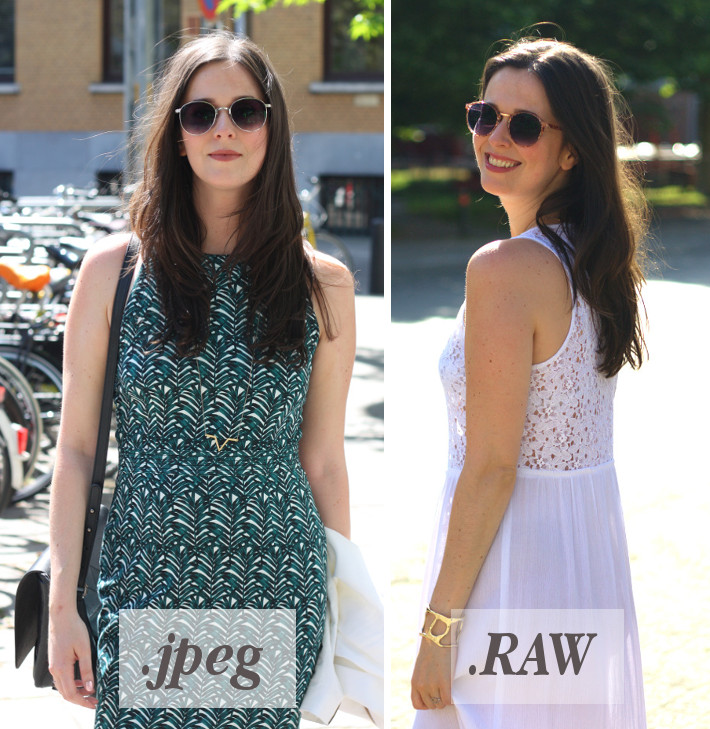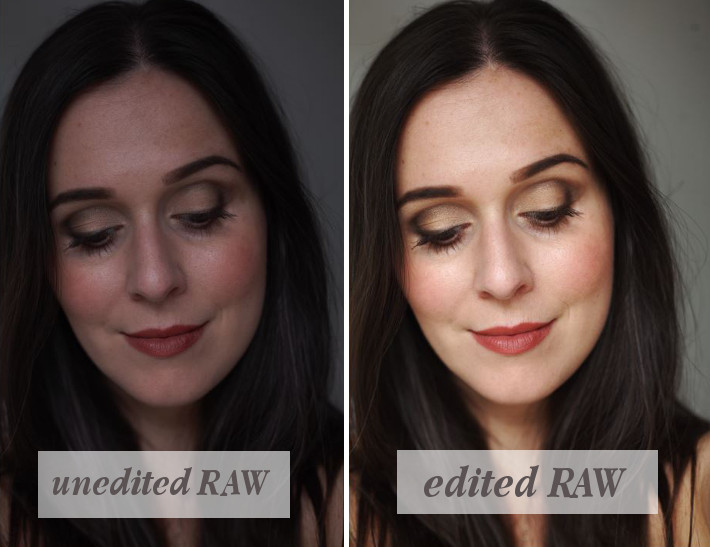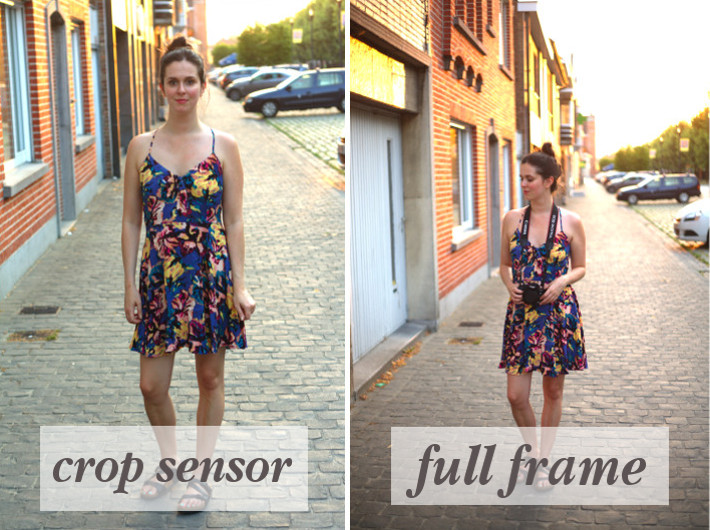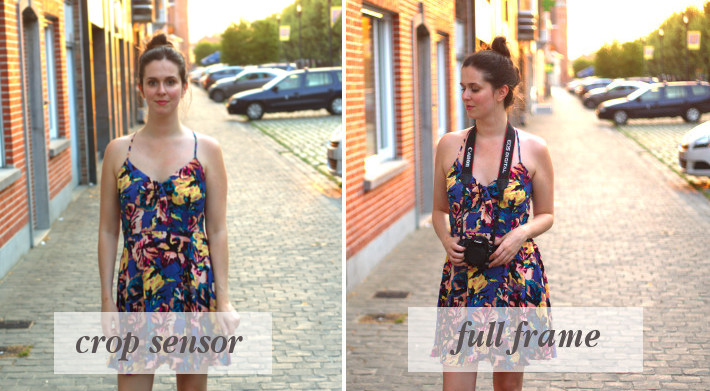A few months ago, after shooting outfit pics with Maya a few times, I sort of impulsively decided that I wanted more out of my photography. I remember starting out snapping my outfits with some cheap little digital camera, not knowing my ISO from my shutter time, but it served its purpose. And then I bought my Canon 450D. Second hand, but I was ecstatic (and I made a lot of silly beginner's mistakes, like randomly blurring stuff out). When I also added my 50mm lens, I finally started really understanding photography: using the manual setting rather than shooting on automatic, I learned using my ISO, aperture and shutter speed to suit the lighting and my aesthetic preferences.
And then, I just settled in for a few years, not really stepping up my game until taking pictures with Maya's amazing camera (and Paulien's example of vastly improving photography) gave me the jolt of inspiration I needed. I started shooting my outfit pictures in RAW instead of in JPEG. A little while later I also made the switch from my crop sensor 450D to a full frame 5D, and this post will show what difference those two things have made to my pictures, in case you're contemplating a similar move.
First, let me show you the differences between shooting in JPEG vs RAW!
Two pictures with very similar light (backlit, shot around noon during the spring-summer season), relatively shallow depth of field, and both were taken with my 450D. The difference seems subtle, but it's definitely there: colours are more true to life, less "flat", more nuanced. Shooting in raw also made my images crisper: not as likely to be out of focus, and more detailed. If you look at my upper arm in the RAW image, you can actually see the little hairs on my skin stand out from the background. That sort of detail is less likely to be picked up when I shoot in JPEG. However, the biggest thing about shooting in RAW is how easy it is to edit images to your liking.
When taking RAW pictures, you start out with a bland, colourless shot which you can edit to your liking. Even badly under/overlit pictures can be saved when you take them in RAW, because RAW photography captures colour nuances that JPEG just doesn't: if an area of your picture is black because lack of light, or white because an abundance of light, that area will not be saved by editing. In RAW, almost everything is possible.
This make up pic was taken in less than ideal circumstances (rather late at night on a cloudy day), and yet, thanks to RAW post-editing, the pictures were perfectly fine to be used in a blog post. Since I don't want to spend a bunch of money on editing programs like Photoshop, I have used GIMP (an open source alternative to photoshop) since forever. GIMP can't deal with RAW images, so now I do most of my editing in UFRAW. Just install, open your RAW images in UFRAW, do the needed edits (white balance, gamma, brightness, contrast etc) and save. This exports the image into a file type that GIMP can open, and then I finish the image in GIMP by resizing and finally saving as JPEG to be posted online.
Now, I also made the switch from crop sensor (Canon 450D) to full frame (Canon 5D, mark I). Let me show you what difference that has made.
First difference: the colour. My 5D camera captures colours more true to life than my 450D: not as grey. Second, the lovely little vignette near the edges in the full frame shots: the edges being darker than the middle of the frame. Love. Third, and most important: these pictures were taken from the same distance, and yet, I seem to be much further away in the full frame shot. As you can see, a crop sensor brings the subject much closer to the camera, compressing the image so to speak. Zooming in a bit makes this even clearer.
Pay attention to the cars: they have not moved between these two shots, and yet, the crop sensor picture shows the cars as much closer to me than their true distance, shown in the full frame shot. The blur or bokeh in the background is also so much prettier in the full frame shot, despite shooting with the same 50mm lense. Photography with a full frame camera gives the image so much more depth, creates more distance between the subject and its surroundings which in turn places more emphasis on the subject. Also, my pictures are almost always perfectly in focus with my Canon 5D, which was absolutely not the case with my 450D.
Taking pictures has become a much smoother process, not fiddling for ages to get the light settings just right, not cursing when all of my shots are just a bit out of focus. The process has also become much more stimulating, allowing for more creativity from me in the editing process. Let me tell you a little secret about myself: I don't enjoy posing for pictures. The part of blogging I enjoy most, is the behind the scenes stuff. Selecting, editing, writing. And my new (old) camera and new editing process has made all of that so much more enjoyable.
Hope this can help anyone who is trying to figure out how to move up in photography, if you have any questions: fire away!
Hope this can help anyone who is trying to figure out how to move up in photography, if you have any questions: fire away!













No comments